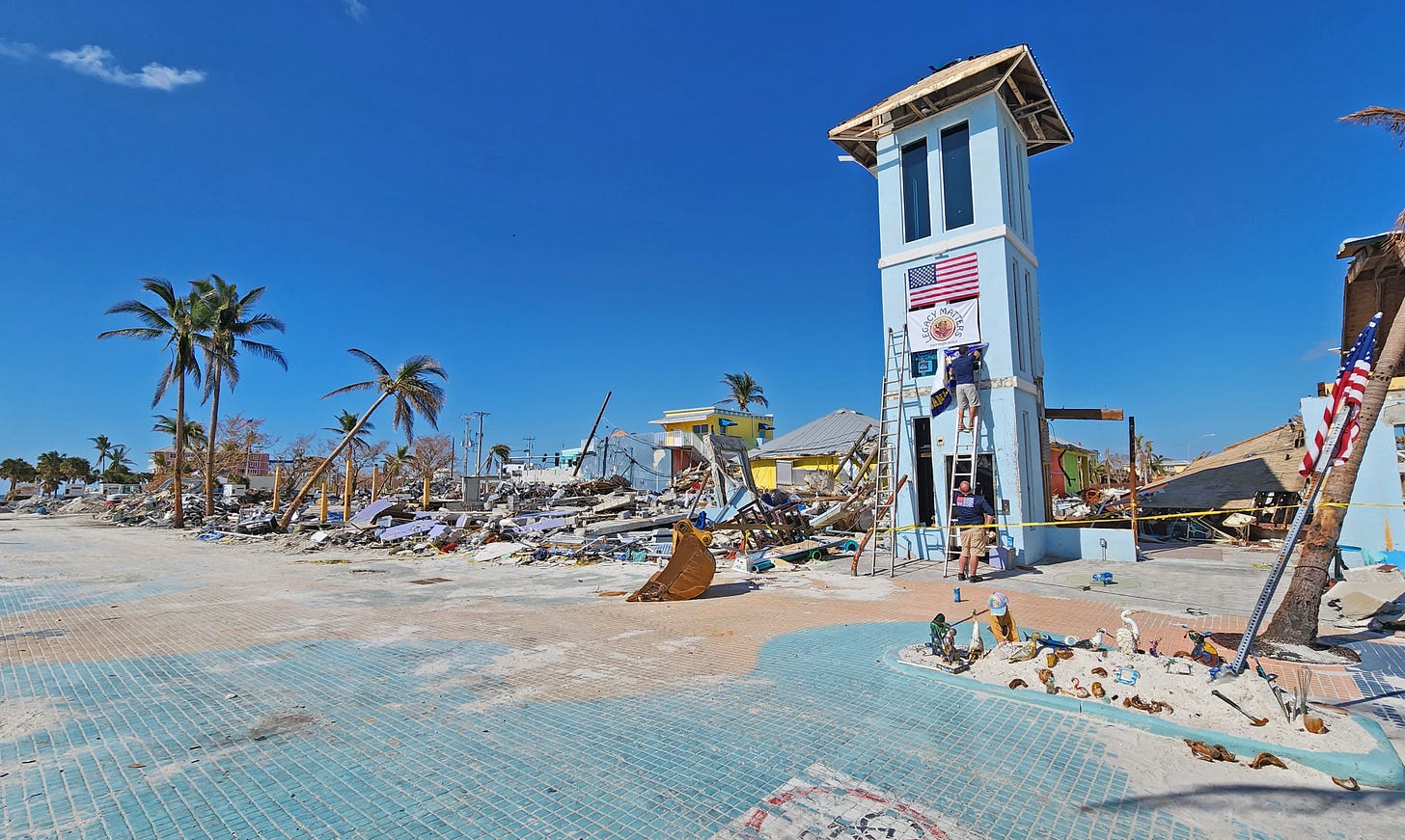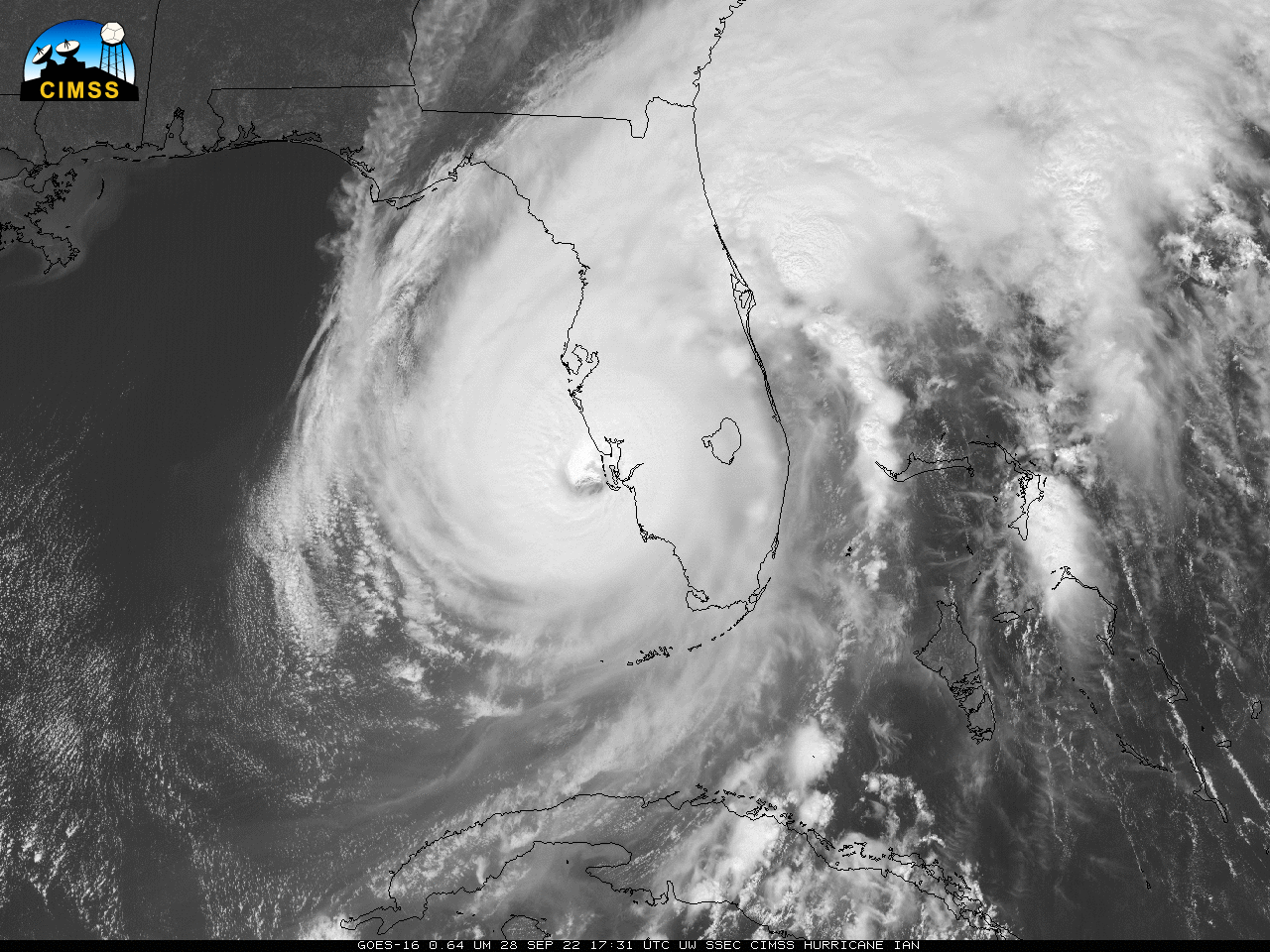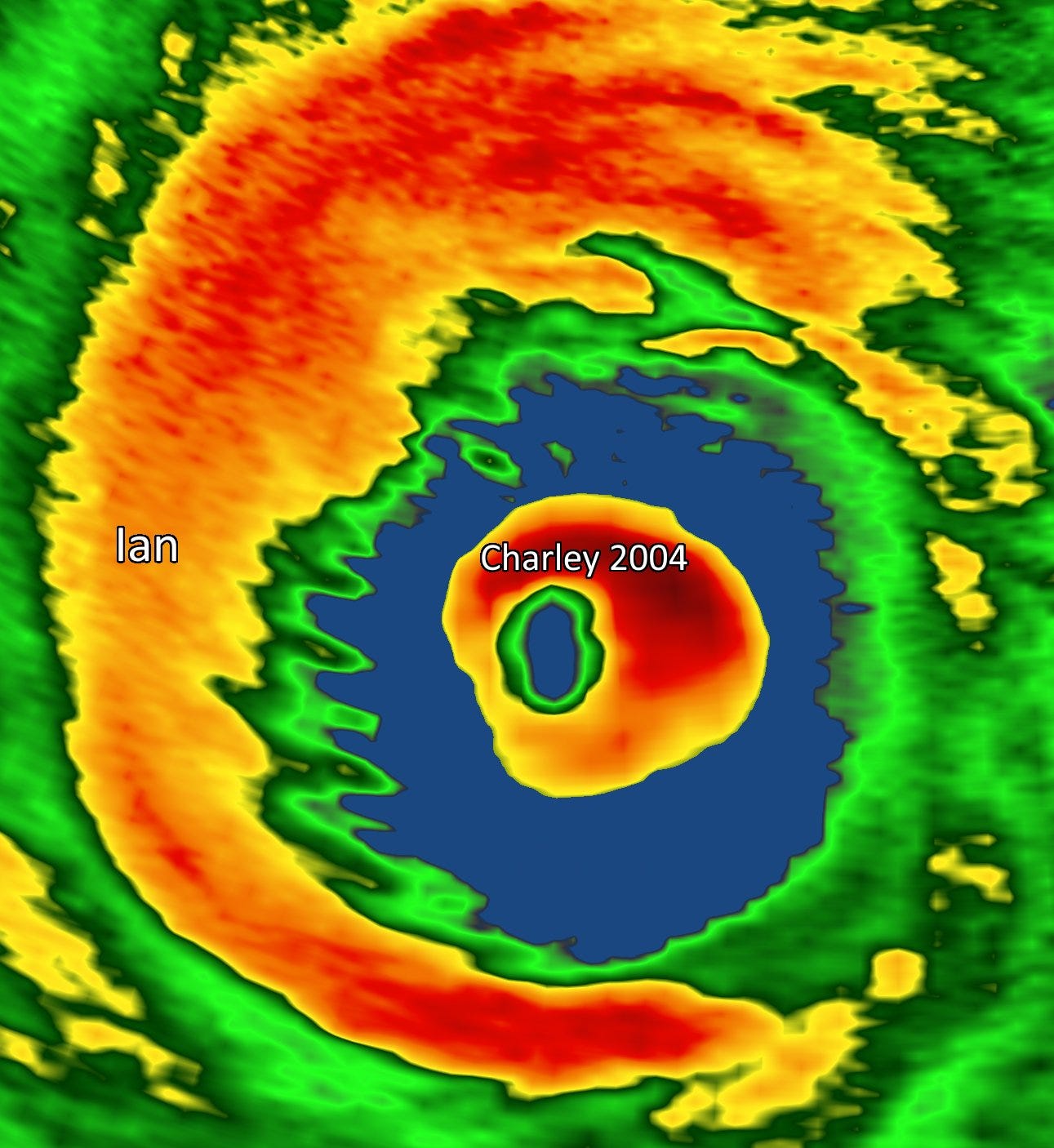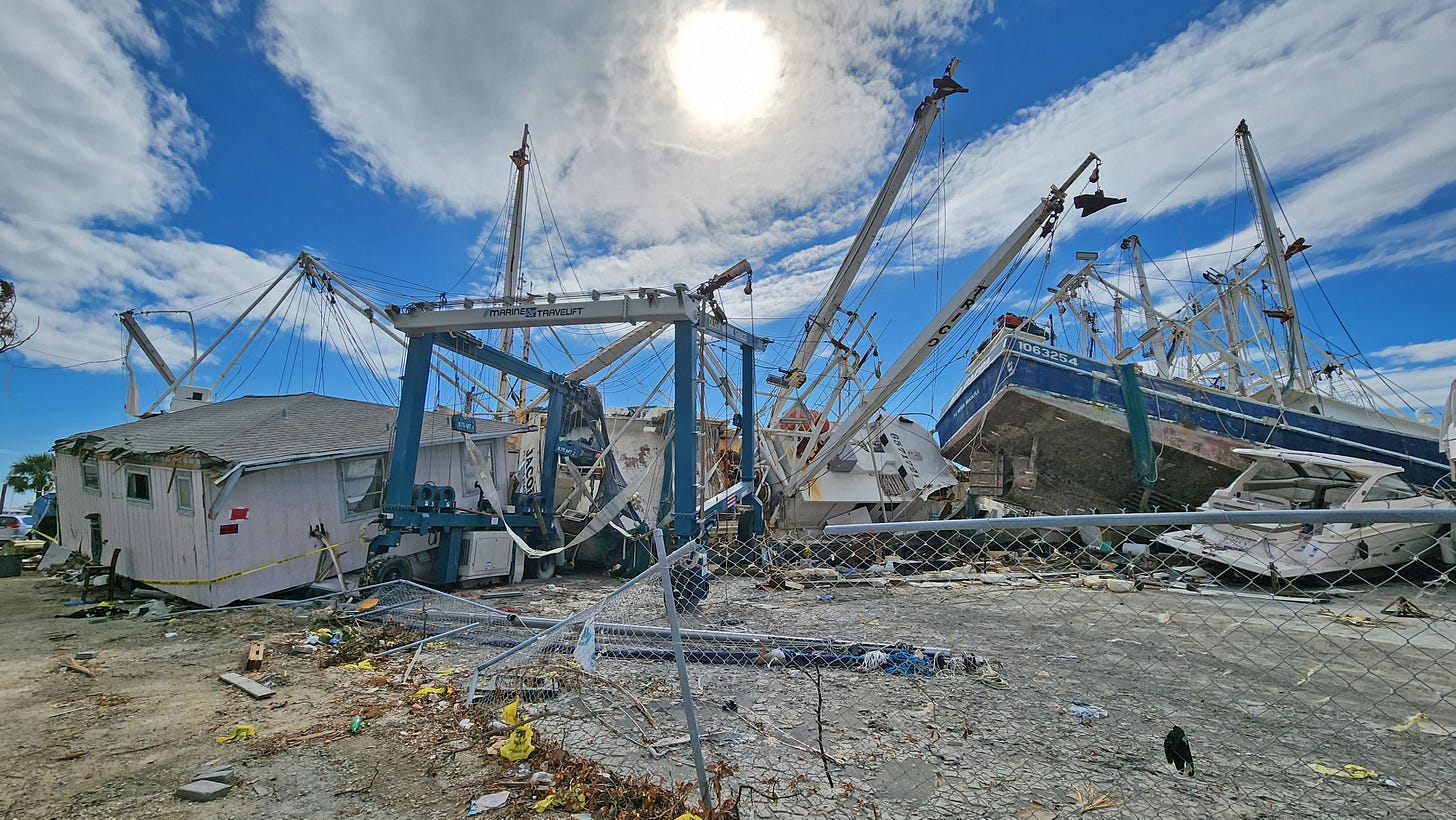
One year ago today, southwest Florida was ravaged by one of the fiercest hurricanes to hit the U.S. coastline this century.

Hurricane Ian not only crossed the same small barrier island as Hurricane Charley 18 years prior, but it did so with the same 155 mph maximum winds, the same 941 mb central pressure, and at nearly the same time of day (3:05 PM local vs. 3:45 PM local) – rapidly strengthening like Charley in the hours leading up to landfall.
Ian was everything we feared Charley could’ve been at the coast. In its own right, Charley was a devastating blow. At the time the costliest hurricane to hit the U.S. since Andrew in 1992, it’s largely remembered for the extreme winds its ferocious eyewall wrought to communities like Punta Gorda, Port Charlotte, and the small city of Wauchula in inland Hardee County. But at the coast Charley’s storm surge footprint was uncharacteristically small – with a peak surge of 6-7 feet in a limited area – due to its tiny 6-12-mile-wide eye.

By contrast Ian was nearly three times the size of Charley at landfall. All of Charley’s hurricane winds could’ve fit inside the calm 35-mile-wide eye of Ian.

Since storm surge – the hazard of a hurricane with the greatest potential for large loss of life – is bigger for bigger storms, Ian seared the same coastline spared by Charley. A catastrophic storm surge of up to 15 feet centered on Sanibel Island and Fort Myers Beach gutted buildings not already toppled or carried away as an angry Gulf of Mexico briefly reclaimed the coast.
Ian’s aftermath felt apocalyptic. Large boats seemingly dropped from the sky, strewn through the mangroves and left piled high in backyards and in local marinas.

Sections of Sanibel Island Causeway washed away, leaving normally inhabited islands completely cut off from the mainland. Places familiar to long-time residents and visitors virtually unrecognizable amidst the rubble. The odor of chemicals and exposed gas and sewer lines permeating the salty air.
In total, 149 lives were confirmed lost from Ian in Florida, with roughly half of those deaths in highly populated Lee County where Ian came ashore. 41 people drowned in Ian’s storm surge, most in Lee County, making storm surge the deadliest hazard of the hurricane. Ian also made its presence felt inland, dropping one to two feet of rain over a wide swath of the Florida peninsula near and south of the I-4 corridor, causing major flooding in spots. The heavy rainfall alone was responsible for a dozen deaths in Florida.

Though the scars of Ian still feel fresh to so many in southwest Florida, even a year later, the spirit of the community has helped to restore and revitalize one of Florida’s most cherished stretches of coastline.

The lessons from Charley weren’t lost and buildings constructed after 2004 generally fared well thanks to stricter building codes. Nevertheless, Ian served as a reminder that even two storms of the same intensity making landfall in the same place can have very different impacts. Don’t assume the next one will be like the last one but let the last one better prepare us for the next one, no matter what the next one brings.



Ian was Charley on major steroids with the accompanying 'roid rage. Punta Gorda surprisingly didn't suffer as badly as our neighbors both north and south of us did but then we don't tend to get much in the way of storm surge thanks to the barrier islands and the peninsula on the far side of Charlotte Harbor. Still scary and destructive. Here's hoping we miss any hits for the rest of this season.